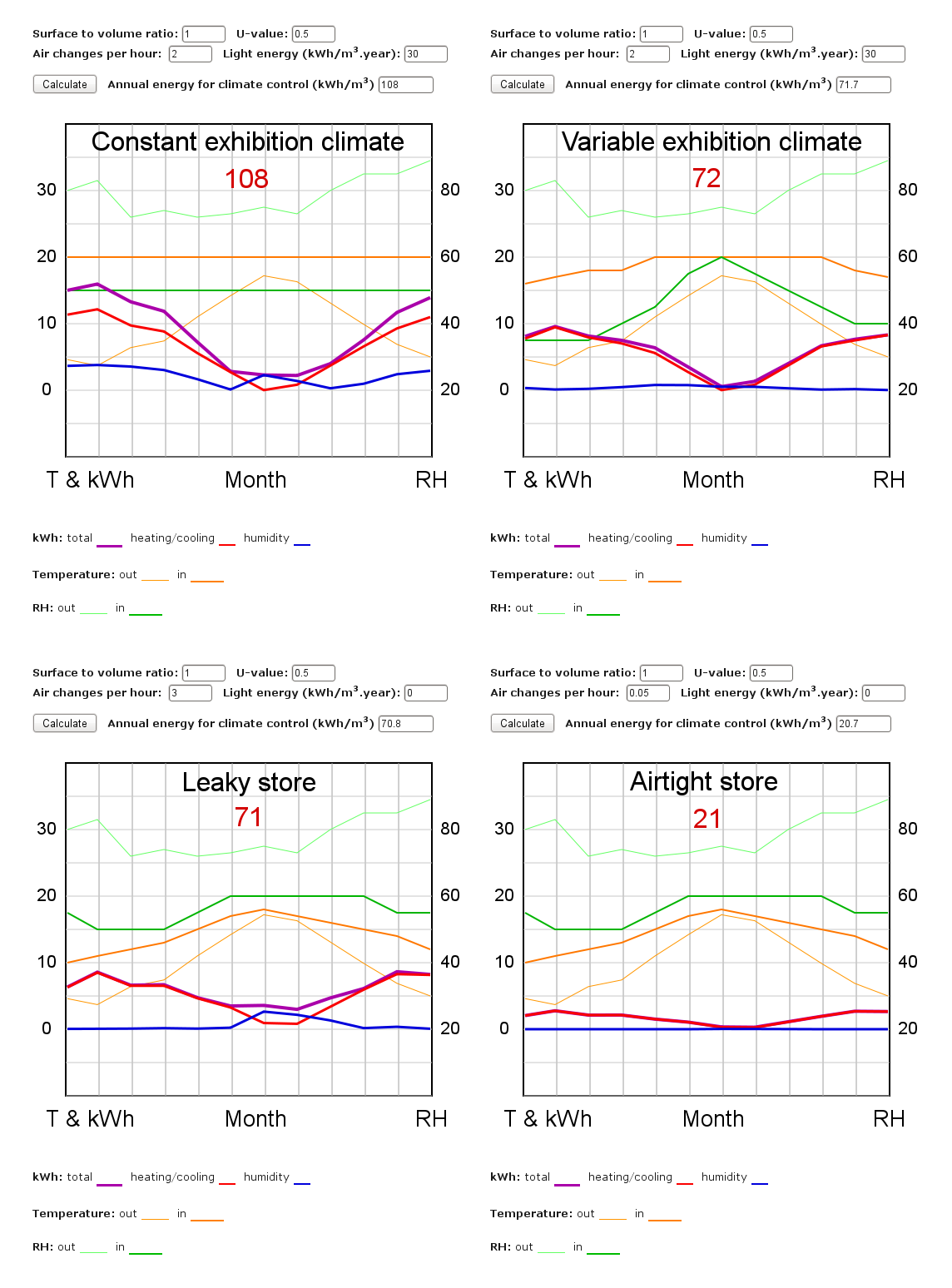
The set of four images below can be enlarged by clicking on them, and will display in a new window or tab. In some browsers you can just zoom this page.
The upper pair of images show, on the left, a conventional museum climate with year round constant 20 degrees and 50 percent RH, on the right the exhibition climate changes with the seasons. The energy saving is about one third. The temperature varies within the lower range of human comfort, from 16 to 20 degrees. In midsummer, the lighting energy provides all the heat needed, so the energy used for climate control becomes zero. The RH varies from 40% to 60%, which reduces the humidity control energy close to zero (the blue line). This means that no air conditioning is required - only heating.
If this RH annual cycle is considered too dangerous, so that air conditioning is required, this will add more to the running cost than the bare comparison of kWh suggests, because of the need for ducts and complicated equipment with associated expert service.
The lower right hand image shows a museum store with a very low air exchange rate. This reduces the humidity control energy to a very small number, which cannot be read off the graph. The RH varies from 50% to 60% on an annual cycle, the temperature varies from 10 to 17 degrees. This requires heating energy, a matter discussed in more detail later. The lower left image is the same museum store with the air exchange rate set to 3 per hour, only to enlarge the humidity control energy trace to show that dehumidification is required in July, August and September.
The energy requirement for the airtight store is one fifth of that needed by the museum exhibition at constant climate. However, this shows the limitation of this simple calculator. The winter heating can be obtained from the ground by building on an uninsulated floor slab. The summer dehumidification can be avoided by using abundant humidity buffer in the construction and furnishing of the store, aided by the natural buffer capacity of the stored items. In reality, the energy consumption can be reduced below 3 kWh per m3, as measured in a real building described in an article about energy consumption in museum stores.
This calculator is therefore only an exploratory tool, whose predictions can be drastically modified by cunning architecture and engineering.
Tim Padfield, December 2010